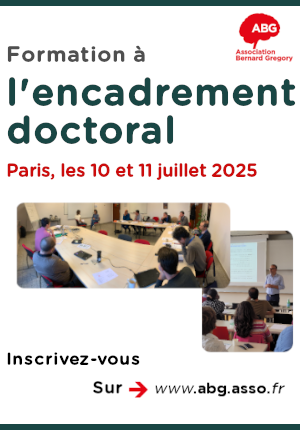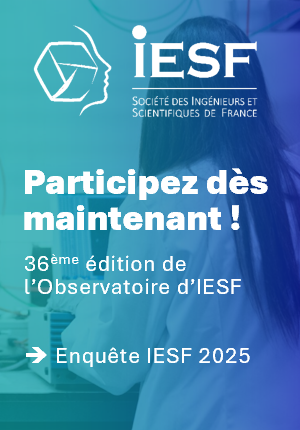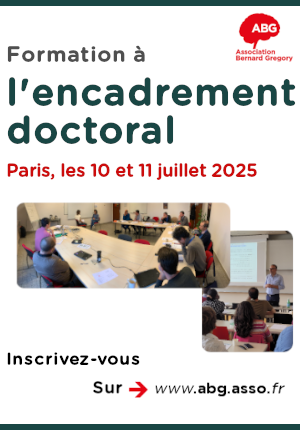Modélisation multi-physique pour la compréhension du comportement de matériaux composites de stockage et de systèmes de stockage d'énergie intégrant ces matériaux // Multi-physics modeling for understanding the behavior of composite materials for energy s
|
ABG-131340
ADUM-63959 |
Thesis topic | |
| 2025-04-23 | Other public funding |
Université de Bordeaux
TALENCE Cédex - France
Modélisation multi-physique pour la compréhension du comportement de matériaux composites de stockage et de systèmes de stockage d'énergie intégrant ces matériaux // Multi-physics modeling for understanding the behavior of composite materials for energy s
- Electronics
stockage latent, matériaux durables, bâtiment à émission nulle, bâtiment à consommation énergétique quasi nulle, transferts couplés, multi échelle
latent storage, sustainable materials, zero emission building, near zero energy building, coupled transfers, multiscale
latent storage, sustainable materials, zero emission building, near zero energy building, coupled transfers, multiscale
Topic description
Le projet de thèse s'inscrit dans le cadre du projet ANR GreenovMAT. Face aux enjeux énergétiques, environnementaux et économiques, il faut œuvrer pour une nouvelle gestion de l'énergie et repenser les émetteurs afin d'apporter de la flexibilité au système électrique. Ce projet vise à contribuer au développement d'une nouvelle génération de plafonds rafraichissants intégrant des technologies de stockage par chaleur latente. L'apport innovant est le développement de matériaux composites qui constitueront ces plafonds avec pour objectifs principaux : améliorer la gestion de l'énergie thermique à l'échelle des bâtiments tertiaires en intégrant les besoins bâtiments/usagers en période estivale ; adapter et piloter les dynamiques de production et d'usage du rafraîchissement pour apporter de la sécurité d'approvisionnement et de la flexibilité ; participer à la décarbonation du rafraîchissement en favorisant la valorisation de l'énergie thermique disponible ainsi que le développement d'enveloppes durables et innovantes de bâtiment. Dans ce contexte, l'objectif est de développer des modèles à l'échelle du matériau et des outils numériques pour (i) contribuer à la compréhension du fonctionnement des matériaux développés et guider ainsi leur amélioration (ii) disposer d'outils de simulation permettant d'optimiser la microstructure des matériaux et les transferts en leur sein.
Des modèles à plusieurs échelles seront développés, puis imbriqués : modèles microscopiques à l'échelle des phases, modèles de type 'milieu continu équivalent' à l'échelle du plafond hybride. Des modèles hybrides associant la physique et l'intelligence artificielle (IA) seront également envisagés. Ces modèles seront alimentés avec les résultats des autres parties du projet pour étudier, via la simulation, l'intégration des MCP développés au plafond.
Ces travaux de modélisation permettront d'orienter le développement à échelle 1 de premiers prototypes en tenant compte du confort des usagers, des consommations d'énergie et de la flexibilité énergétique.
------------------------------------------------------------------------------------------------------------------------------------------------------------------------
------------------------------------------------------------------------------------------------------------------------------------------------------------------------
The thesis project is part of the ANR GreenovMAT project. Faced with energy, environmental, and economic challenges, we must work towards a new approach to energy management and rethink emitters in order to bring flexibility to the electrical system. This project aims to contribute to the development of a new generation of cooling ceilings incorporating latent heat storage technologies. The innovative contribution is the development of composite materials that will make up these ceilings, with the following main objectives: to improve thermal energy management in commercial buildings by integrating building/user needs during the summer; adapting and controlling cooling production and usage dynamics to provide security of supply and flexibility; contributing to the decarbonization of cooling by promoting the use of available thermal energy and the development of sustainable and innovative building envelopes. In this context, the objective is to develop material-scale models and digital tools to (i) contribute to understanding how the developed materials work and thus guide their improvement (ii) provide simulation tools to optimize the microstructure of materials and transfers within them. Multi-scale models will be developed and then integrated: microscopic models at the phase scale, “equivalent continuous medium” models at the hybrid ceiling scale. Hybrid models combining physics and artificial intelligence (AI) will also be considered. These models will be fed with results from other parts of the project to study, through simulation, the integration of the developed MCPs into the ceiling.
This modeling work will guide the full-scale development of initial prototypes, taking into account user comfort, energy consumption, and energy flexibility.
------------------------------------------------------------------------------------------------------------------------------------------------------------------------
------------------------------------------------------------------------------------------------------------------------------------------------------------------------
Début de la thèse : 01/10/2025
Des modèles à plusieurs échelles seront développés, puis imbriqués : modèles microscopiques à l'échelle des phases, modèles de type 'milieu continu équivalent' à l'échelle du plafond hybride. Des modèles hybrides associant la physique et l'intelligence artificielle (IA) seront également envisagés. Ces modèles seront alimentés avec les résultats des autres parties du projet pour étudier, via la simulation, l'intégration des MCP développés au plafond.
Ces travaux de modélisation permettront d'orienter le développement à échelle 1 de premiers prototypes en tenant compte du confort des usagers, des consommations d'énergie et de la flexibilité énergétique.
------------------------------------------------------------------------------------------------------------------------------------------------------------------------
------------------------------------------------------------------------------------------------------------------------------------------------------------------------
The thesis project is part of the ANR GreenovMAT project. Faced with energy, environmental, and economic challenges, we must work towards a new approach to energy management and rethink emitters in order to bring flexibility to the electrical system. This project aims to contribute to the development of a new generation of cooling ceilings incorporating latent heat storage technologies. The innovative contribution is the development of composite materials that will make up these ceilings, with the following main objectives: to improve thermal energy management in commercial buildings by integrating building/user needs during the summer; adapting and controlling cooling production and usage dynamics to provide security of supply and flexibility; contributing to the decarbonization of cooling by promoting the use of available thermal energy and the development of sustainable and innovative building envelopes. In this context, the objective is to develop material-scale models and digital tools to (i) contribute to understanding how the developed materials work and thus guide their improvement (ii) provide simulation tools to optimize the microstructure of materials and transfers within them. Multi-scale models will be developed and then integrated: microscopic models at the phase scale, “equivalent continuous medium” models at the hybrid ceiling scale. Hybrid models combining physics and artificial intelligence (AI) will also be considered. These models will be fed with results from other parts of the project to study, through simulation, the integration of the developed MCPs into the ceiling.
This modeling work will guide the full-scale development of initial prototypes, taking into account user comfort, energy consumption, and energy flexibility.
------------------------------------------------------------------------------------------------------------------------------------------------------------------------
------------------------------------------------------------------------------------------------------------------------------------------------------------------------
Début de la thèse : 01/10/2025
Funding category
Other public funding
Funding further details
ANR
Presentation of host institution and host laboratory
Université de Bordeaux
Institution awarding doctoral degree
Université de Bordeaux
Graduate school
209 Sciences Physiques et de l'Ingénieur
Candidate's profile
De formation en ingénierie, de préférence de formation plutôt numérique mais intéressé pour développer ses compétences expérimentales également.
Training in engineering, preferably digital but also interested in developing experimental skills.
Training in engineering, preferably digital but also interested in developing experimental skills.
2025-06-30
Apply
Close
Vous avez déjà un compte ?
Nouvel utilisateur ?
More information about ABG?
Get ABG’s monthly newsletters including news, job offers, grants & fellowships and a selection of relevant events…
Discover our members
 CASDEN
CASDEN 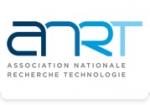 ANRT
ANRT  Aérocentre, Pôle d'excellence régional
Aérocentre, Pôle d'excellence régional  TotalEnergies
TotalEnergies  MabDesign
MabDesign  Ifremer
Ifremer  ASNR - Autorité de sûreté nucléaire et de radioprotection - Siège
ASNR - Autorité de sûreté nucléaire et de radioprotection - Siège  MabDesign
MabDesign 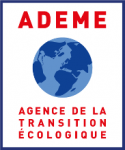 ADEME
ADEME  Nokia Bell Labs France
Nokia Bell Labs France  Groupe AFNOR - Association française de normalisation
Groupe AFNOR - Association française de normalisation  Laboratoire National de Métrologie et d'Essais - LNE
Laboratoire National de Métrologie et d'Essais - LNE  ONERA - The French Aerospace Lab
ONERA - The French Aerospace Lab 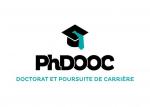 PhDOOC
PhDOOC  Généthon
Généthon  SUEZ
SUEZ  Tecknowmetrix
Tecknowmetrix  CESI
CESI  Institut Sup'biotech de Paris
Institut Sup'biotech de Paris

